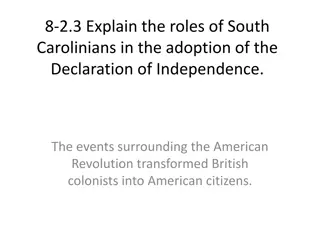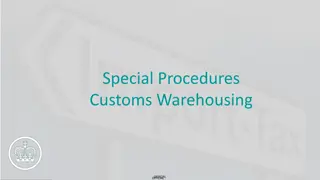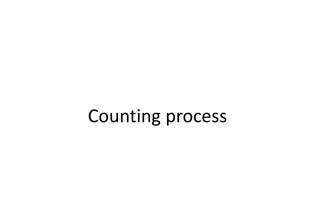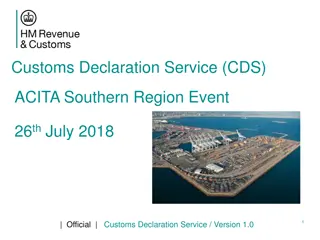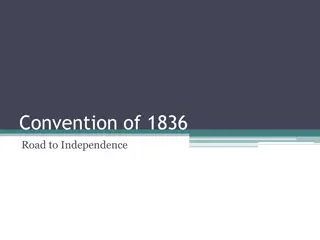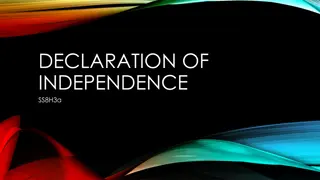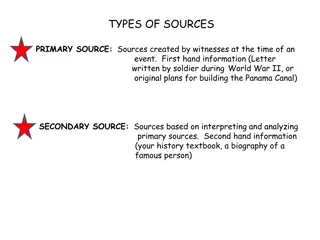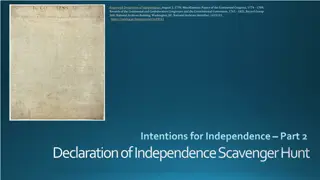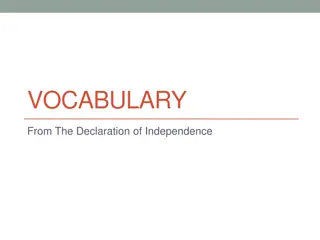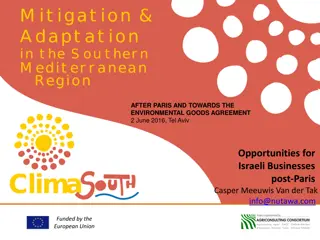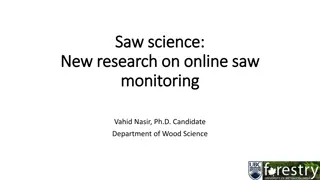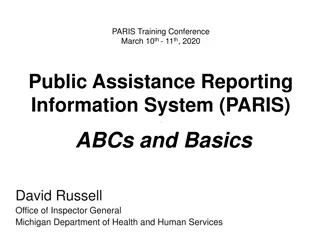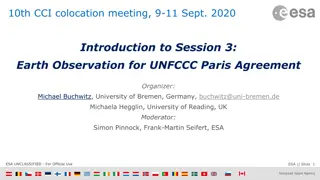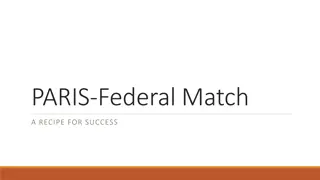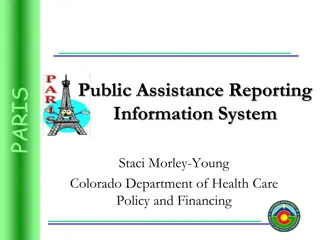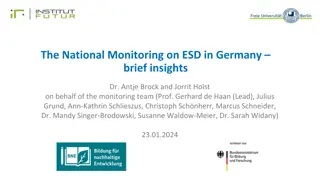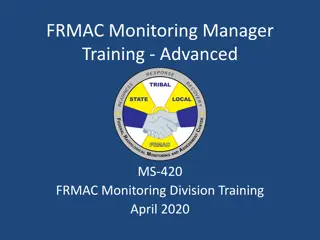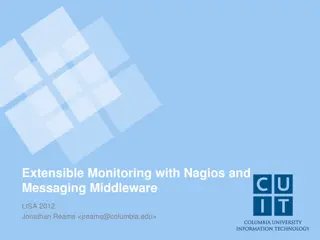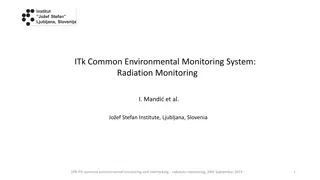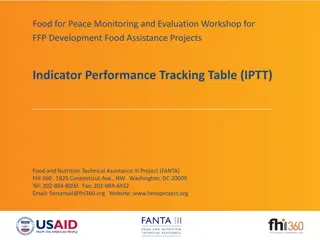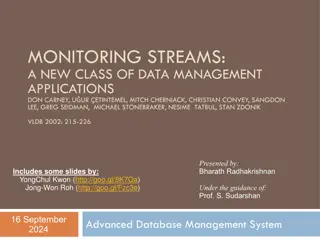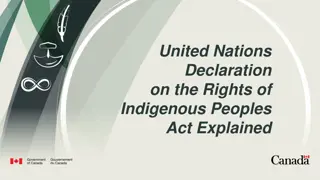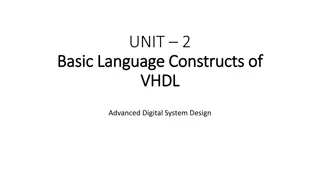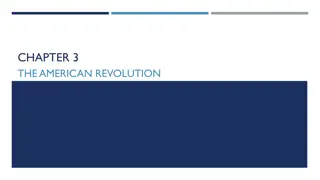Global Experience in Monitoring the Paris Declaration
Brenda Killen from the OECD's Aid Quality and Architecture Division discusses the monitoring of the Paris Declaration and Busan commitments. The process involves evidence-based monitoring, surveys, and evaluation across multiple countries to assess progress towards aid effectiveness goals. Key findings reveal lessons learned, the importance of stakeholder engagement, and the need for continuous improvement in aid delivery approaches.
Download Presentation

Please find below an Image/Link to download the presentation.
The content on the website is provided AS IS for your information and personal use only. It may not be sold, licensed, or shared on other websites without obtaining consent from the author. Download presentation by click this link. If you encounter any issues during the download, it is possible that the publisher has removed the file from their server.
E N D
Presentation Transcript
Global experience in monitoring the Paris Declaration, and agreements on monitoring Busan commitments Brenda Killen Aid Quality and Architecture Division Development Co-operation Directorate, OECD
Well always have Paris LESSONS FROM PARIS
HLF 4: an evidence-based process Monitoring the implementation of the Paris Declaration and AAA Surveys (2006, 2008, 2011): 78 countries in 2011 (incl. 12 countries looking at Fragile States Principles) Evaluating the Paris Declaration (independent process) 22 countries and 18 donors/agencies Additional sources of information 3
Quick overview on PD evidence: (32 baseline countries) 2005 Baseline 2010 Target 19% 52% 75% 1. Operational Development Strategies 2a. Reliable Public Financial Management (PFM) systems 38% 50% 44% 46% 85% 3. Aid flows are aligned on national priorities 50% 49% 51% 4. Strengthen capacity by co-ordinated support 40% 48% 54% 5a. Use of country PFM systems 1 696 1158 6. Strengthen capacity by avoiding Parallel PIUs 565 42% 43% 7. Aid is more predictable 71% 89% 87% >87% 8. Aid is untied 43% 48% 66% 9. Use of common arrangements or procedures 40% 20% 22% 10a. Joint missions 41% 44% 10b. Joint country analytic work 66% 7% 22% 38% 11. Results-oriented frameworks 44% 100% 12. Mutual accountability 50%
What have we learned? 1. Survey helped to maintain interest 2. Survey stimulated dialogue at country level 3. Ownership from participants 4. Regional approach was useful 5. Scope for more locally-owned analysis 6. Survey only tells part of the story
Increased interest in the survey 2011 2008 2006 34 partner countries 36% of global aid 55 partner countries 58% of global aid 76 partner countries 76% of global aid % of global core aid covered by the Survey (est.)
I think this is the beginning of a beautiful friendship MONITORING BUSAN PARTNERSHIP
A country focussed globally light approach COUNTRY LEVEL FRAMEWORKS Own indicators and targets Lead by the country Results made public + INTERNATIONAL LEVEL FRAMEWORK Selective indicators and targets, measured globally or aggregating country-level information Monitor progress on a rolling basis Managed by the Global Partnership
Why a global monitoring framework? SUPPORTS ACCOUNTABILITY SERVE AS A REFERENCE POINT FOR COUNTRY LEVEL FRAMEWORKS STIMULATE BROAD-BASED DIALOGUE AND LEARNING
Approach to global monitoring Global progress reports produced to inform ministerial- level meetings No more centrally managed surveys use of existing sources of data when and as they become available Data collection at country level to be grounded in existing national monitoring processes Continued support through a Global Help Desk Facility Overall assessment of progress to draw on indicators and complementary qualitative evidence Periodic reviews of global indicators and underpinning methodology through the Steering Committee
Global indicators Thematic Indicator Extent of use of country results frameworks by co-operation providers (specific criteria to be finalised). Development co-operation is focused on results that meet developing countries priorities 1 Enabling Environment Index Civil society operates within an environment which maximises its engagement in and contribution to development 2 Measure to be identified Engagement and contribution of the private sector to development Transparency: information on development co-operation is publicly available Development co-operation is more predictable 3 Measure of state of implementation of the common standard by co-operation providers a) annual: proportion of aid disbursed within the fiscal year within which it was scheduled by co-operation providers; b) medium-term: proportion of aid covered by indicative forward spending plans provided at the country level 4 5 % of aid scheduled for disbursement that is recorded in the annual budgets approved by the legislatures of developing countries. % of countries that undertake inclusive mutual assessments of progress in implementing agreed commitments. Aid is on budgets which are subject to parliamentary scrutiny 6 Mutual accountability among development co-operation actors is strengthened through inclusive reviews Gender equality and women s empowerment 7 % of countries with systems that track and make public allocations for gender equality and women s empowerment. 8 (a) Quality of developing country PFM systems; and (b) Use of country PFM and procurement systems. Effective institutions: developing countries systems are strengthened and used 9 % of aid that is fully untied. 10Aid is untied
Global Indicators: Info to be provided by countries Thematic Indicator Extent of use of country results frameworks by co-operation providers (specific criteria to be finalised). Development co-operation is focused on results that meet developing countries priorities 1 Enabling Environment Index Civil society operates within an environment which maximises its engagement in and contribution to development 2 Measure to be identified Engagement and contribution of the private sector to development Transparency: information on development co-operation is publicly available Development co-operation is more predictable 3 Measure of state of implementation of the common standard by co-operation providers a) annual: proportion of aid disbursed within the fiscal year within which it was scheduled by co-operation providers; b) medium-term: proportion of aid covered by indicative forward spending plans provided at the country level 4 5 % of aid scheduled for disbursement that is recorded in the annual budgets approved by the legislatures of developing countries. % of countries that undertake inclusive mutual assessments of progress in implementing agreed commitments. Aid is on budgets which are subject to parliamentary scrutiny 6 Mutual accountability among development co-operation actors is strengthened through inclusive reviews Gender equality and women s empowerment 7 % of countries with systems that track and make public allocations for gender equality and women s empowerment. 8 (a) Quality of developing country PFM systems; and (b) Use of country PFM and procurement systems. Effective institutions: developing countries systems are strengthened and used 9 % of aid that is fully untied. 10Aid is untied
Country level monitoring Essential for realising the Busan commitments as delivery is at the country level. Led by developing countries according their specific demands Existence of country level monitoring reinforces global monitoring. Could be coordinated regionally
Linkages between global and country level Country level indicators Global Indicators Gives a reference on how others are doing Country level data needed for global level Regional organisations key for support and accountability http://t0.gstatic.com/images?q=tbn:ANd9GcSRWzh6k7PYkk0eK4PdBPXUeQn25olHfuZahGGEFAOBVZIhovbFmH23WZ8 http://t2.gstatic.com/images?q=tbn:ANd9GcQ5PRLzGCq8hiK39srakm-n7aW-jkiroIzzDRR08pIkRCvrGixX4Ou-C2A Joint OECD/UNDP could provide support for menu of indicators Country results could be reported at the Global Partnership


